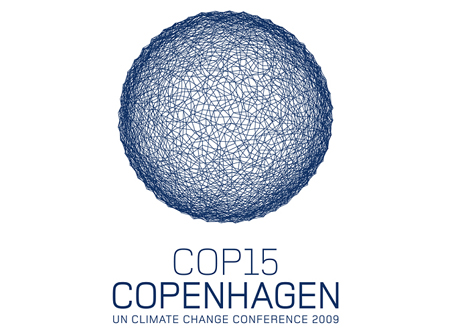
The Montreal Protocol
The Montreal Protocol is an international treaty to eliminate chemicals called chlorofluorocarbons (CFCs).
Scientific studies in the 1970s revealed that CFCs were accumulating in the stratosphere and destroying the ozone layer which shields us from the harmful effects of ultraviolet (UV) radiation. The US banned CFCs in the late 1970s.
In 1987, 93 nations adopted the Montreal Protocol and agreed to end production of ozone-depleting chemicals by the end of the century.
While the Montreal Protocol resulted in a rapid phase out of CFCs worldwide, the ozone hole has been a bit slower to recover because CFCs are chemically stable and remain in the atmosphere for nearly a century. This lag time between taking an action to reduce a greenhouse gas and the atmospheric response is important to remember when considering climate change mitigation efforts.

A Common Misconception
Destruction from CFCs has resulted in the "ozone hole", a region of exceptionally depleted ozone in the stratosphere over the Antarctic that occurs at the beginning of spring in the southern hemisphere, or mid-August.
Contrary to a common misconception, the ozone hole does not contribute to warming of the planet and is not causing climate change. Correlation does not mean causation. The ozone hole occurs in a very cold stratosphere over Antarctica after months of solar darkness. While a thinner ozone layer may allow more UV radiation to reach the ground, solar energy at the poles is negligible compared to the energy gains from incoming solar radiation at the Earth's equator.
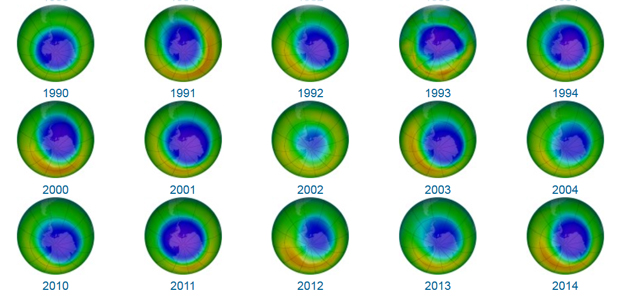
IPCC
The Intergovernmental Panel on Climate Change (IPCC) was established in 1988 by the World Meteorological Organization (WMO) and the United Nations Environment Programme (UNEP) in response to growing concerns about increasing levels of all greenhouse gases.
The IPCC is a scientific body. It reviews and assesses the most recent scientific, technical and socio-economic information produced worldwide relevant to the understanding of climate change. It does not conduct research nor does it monitor climate related data. Thousands of scientists from all over the world contribute to the work of the IPCC on a voluntary basis. The IPCC is located in Geneva Switzerland.
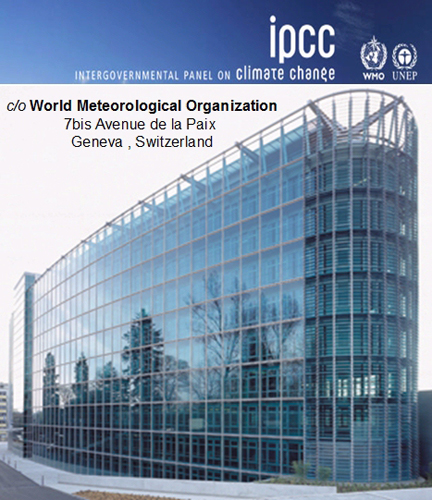
IPCC First Assessment Report
The IPCC completed its First Assessment Report in 1990 which provided the overall policy framework for addressing the issue of climate change. These efforts contributed to the development of the United Nations Framework Convention on Climate Change (UNFCCC), an international treay formally established in 1994 to address ways to reduce global warming and to cope with whatever temperature increases are inevitable. The UNFCCC was adopted and ratified by virtually all nations including the US.
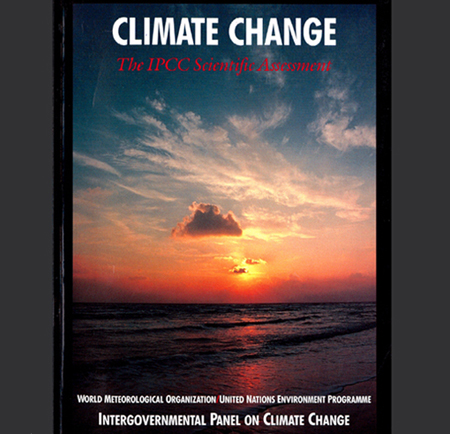
The 2nd IPCC Report (1995)
The IPCC Second Assessment Report of 1995 provided important input for the negotiations of the Kyoto Protocol in 1997, an international and binding agreement to reduce greenhouse gas emissions worldwide.
The key finding from the 2nd IPPC Assessment was
"The balance of evidence suggests a discernible human influence on global climate".
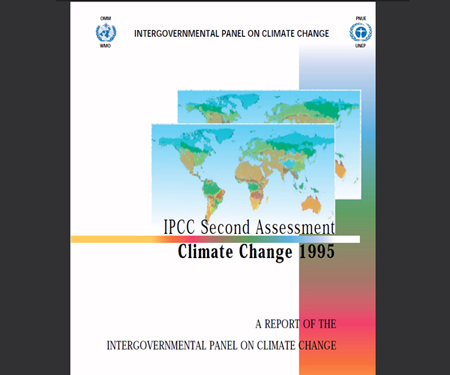
The Kyoto Protocol
The Kyoto Protocol is an addition to the UNFCCC that has more powerful (and legally binding) measures. The protocol was adopted in December 1997 in Kyoto, Japan, debated for nearly a decade, and finally entered into force in February 2005.
One hundred and thirty-seven (137) developing countries have ratified the protocol, including Brazil, China and India, making a commitment to stabilizing green house gas emissions. In contrast to
the leading role that the United States took in the Montreal Protocol, the US has not signed on to the Kyoto Protocol.
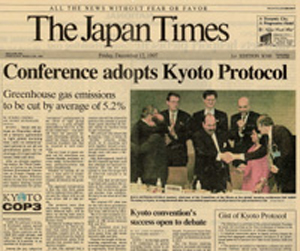
The IPCC Third Assessment Report (2001)
The key finding from the 3rd IPPC Assessment was
"Most of the warming of the past 50 years is likely (>66%) to be attributable to human activities."
Each IPCC Assessment and Special Report has a Summary for Policymakers (SPM) which is widely distributed. The SPM text is subject to line by line discussions and approval at a Plenary Session. The SPM has to be consistent with the factual material contained in the full report. Lead Authors of the report participate in the Session to provide explanations and clarifications and assist to ensure that consistency between the Summary for Policymakers and the full report is achieved.
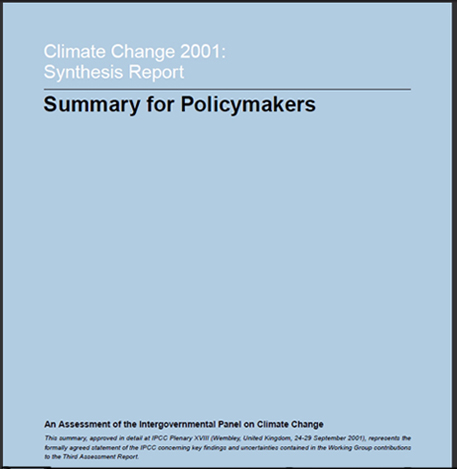
The IPCC Fourth Assessment
The IPCC Fourth Assessment Report (FAR) was published in 2007. This report laid the foundation for measures needed to counteract climate change in the 21st century.
The IPCC was awarded the Nobel Peace Prize for their efforts, the lead authors are shown accepting the award in Oslo Norway.
The key finding from the 2007 IPCC report clearly states "Warming is unequivocal, and most of the warming of the past 50 years is very likely (>90%) due to increases in greenhouse gases."
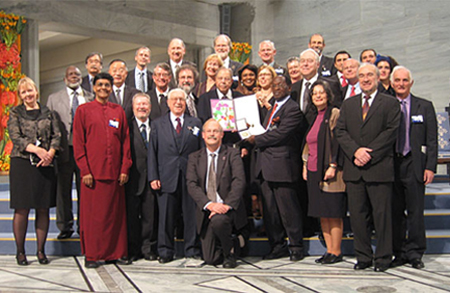
COP 15
The 2009 United Nations Climate Change Conference, commonly known as the Copenhagen Summit, was held in Copenhagen, Denmark. The gathering included the 15th Conference of the Parties (COP 15) to the United Nations Framework Convention on Climate Change (UNFCCC).
COP 15 produced the Copenhagen Accord, which states, in part
"We agree that deep cuts in global emissions are required according to science, and as
documented by the IPCC Fourth Assessment Report with a view to reduce global emissions so as to hold
the increase in global temperature below 2 degrees Celsius, and take action to meet this objective
consistent with science and on the basis of equity."
